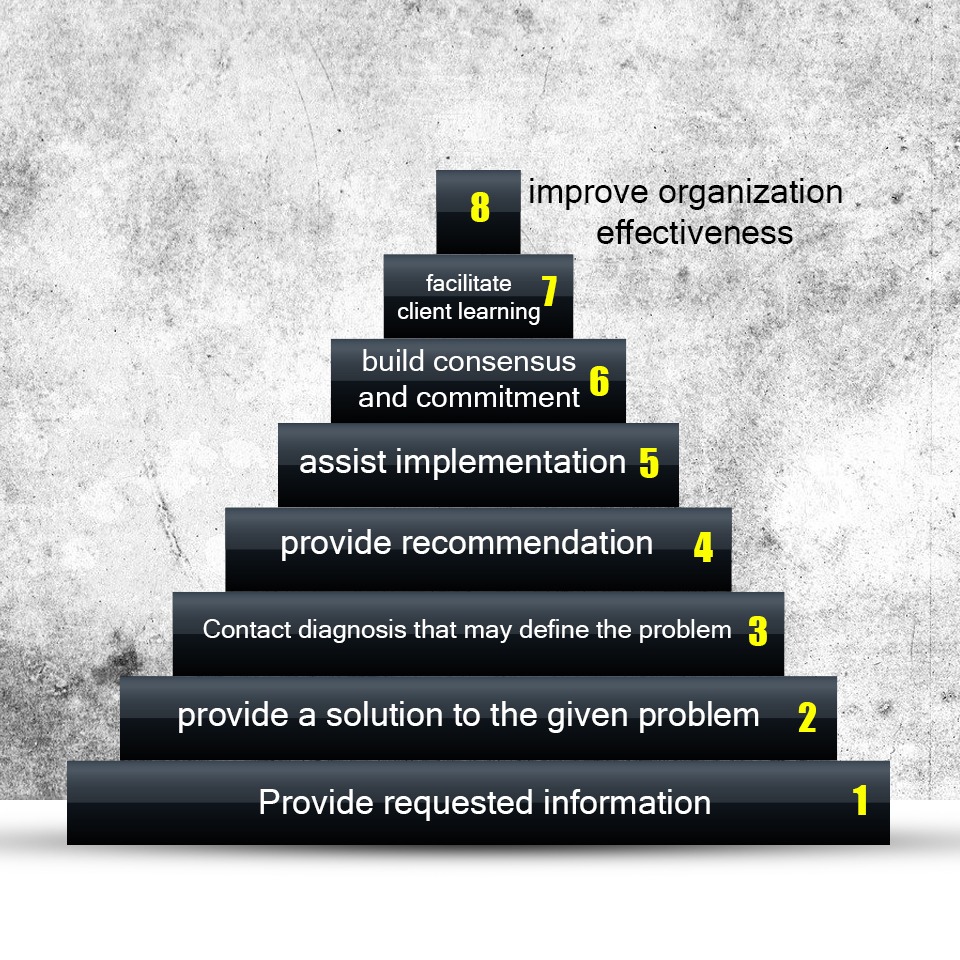Consulting Is More than Giving Advice
How to Select a Corrective Consultant
A Hierarchy of Purposes
Management consulting includes a broad range of activities, and the many firms and their members often define these practices quite differently. One way to categorize the activities is in terms of the professional’s area of expertise (such as competitive analysis, corporate strategy, operations management, or human resources). But in practice, as many differences exist within these categories as between them.
Another approach is to view the process as a sequence of phases
Perhaps a more useful way of analyzing the process is to consider its purposes; clarity about goals certainly influences an engagement’s success. Here are consulting’s eight fundamental objectives, arranged hierarchically (also see the Exhibit):
Exhibit A hierarchy of consulting purposes
- Providing information to a client.
- Solving a client’s problems.
- Making a diagnosis, which may necessitate a redefinition of the problem.
- 4.-Making recommendations based on the diagnosis.
- Assisting with the implementation of recommended solutions.
- Building a consensus and commitment around corrective action.
- Facilitating client learning—that is, teaching clients how to resolve similar problems in the future.
- Permanently improving organizational effectiveness.
The lower-numbered purposes are understood, practiced, and more requested by clients. Many consultants, however, aspire to a higher stage on the pyramid than most of their engagements achieve. Purposes 1 through 5 are generally considered legitimate functions, though some controversy surrounds purpose 5.
Management consultants are less likely to address purposes 6 through 8 explicitly, and their clients are not as likely to request them. But leading firms and their clients are beginning to approach lower-numbered purposes in ways that involve the other goals as well. Goals 6 through 8 considered by-products of earlier purposes, not additional objectives that become relevant only when the other purposes have been achieved.
They are essential to effective consulting even if not recognized as explicit goals when the engagement begins. Moving up the pyramid toward more ambitious purposes requires increasing sophistication and skill in the processes of consulting and in managing the consultant-client relationship. Sometimes a professional tries to shift the purpose of an engagement even though a shift is not called for; the firm may have lost track of the line between what is best for the client and what is best for the consultant’s business.
Reputable consultants do not usually try to prolong engagements or enlarge their scope. Wherever on the pyramid, the relationship starts, the outsider’s first job is to address the purpose the client requests. As the need arises, both parties may agree to move to other goals.



